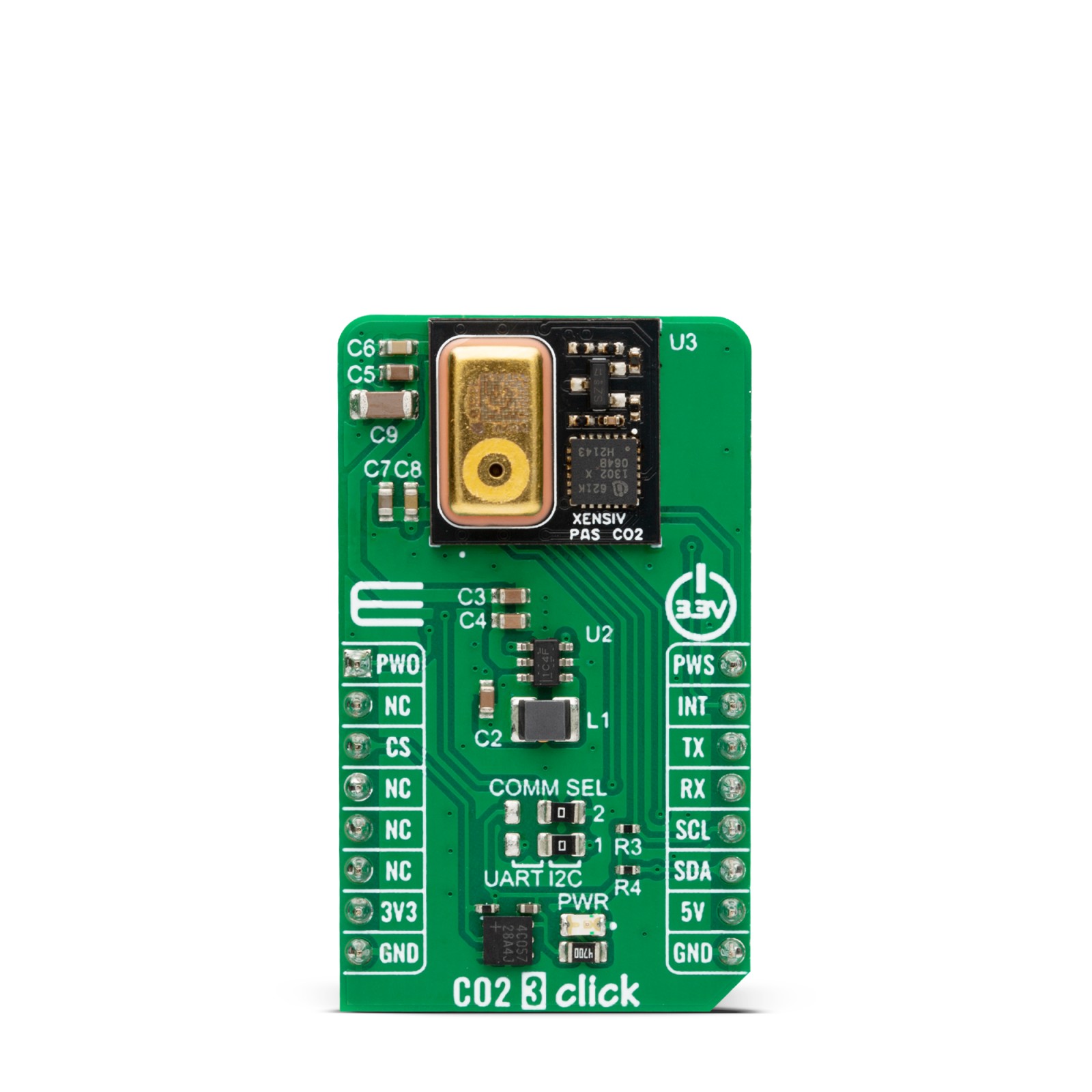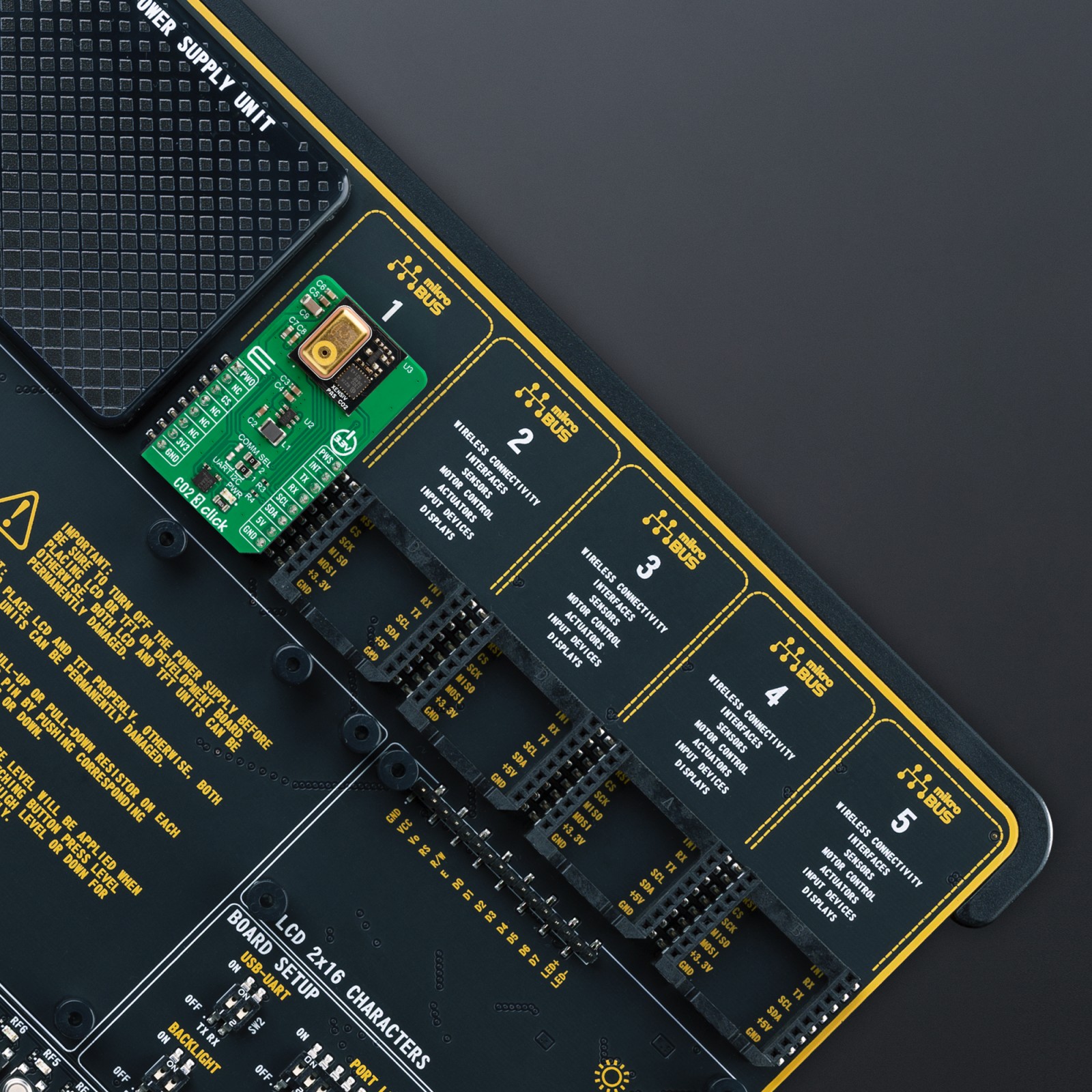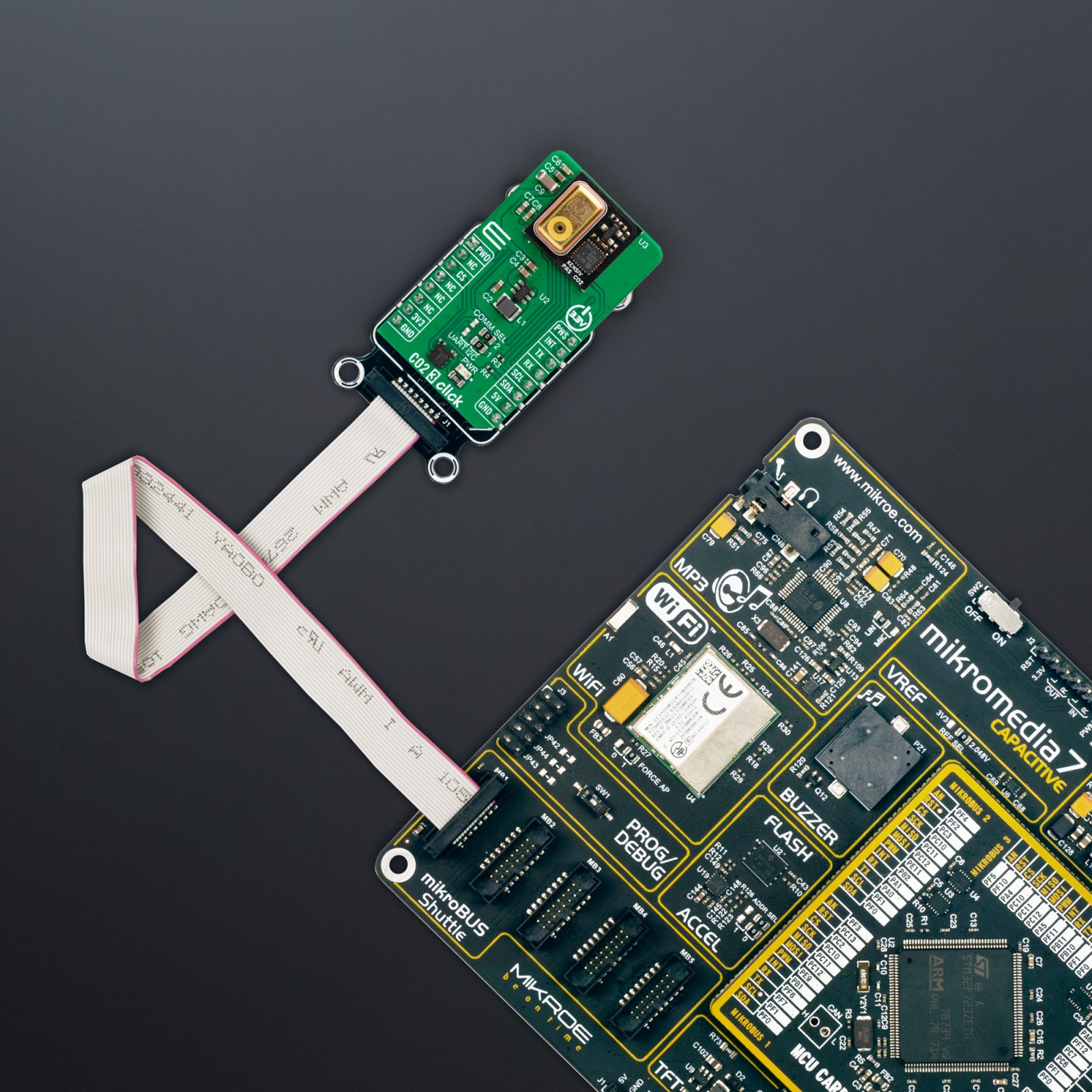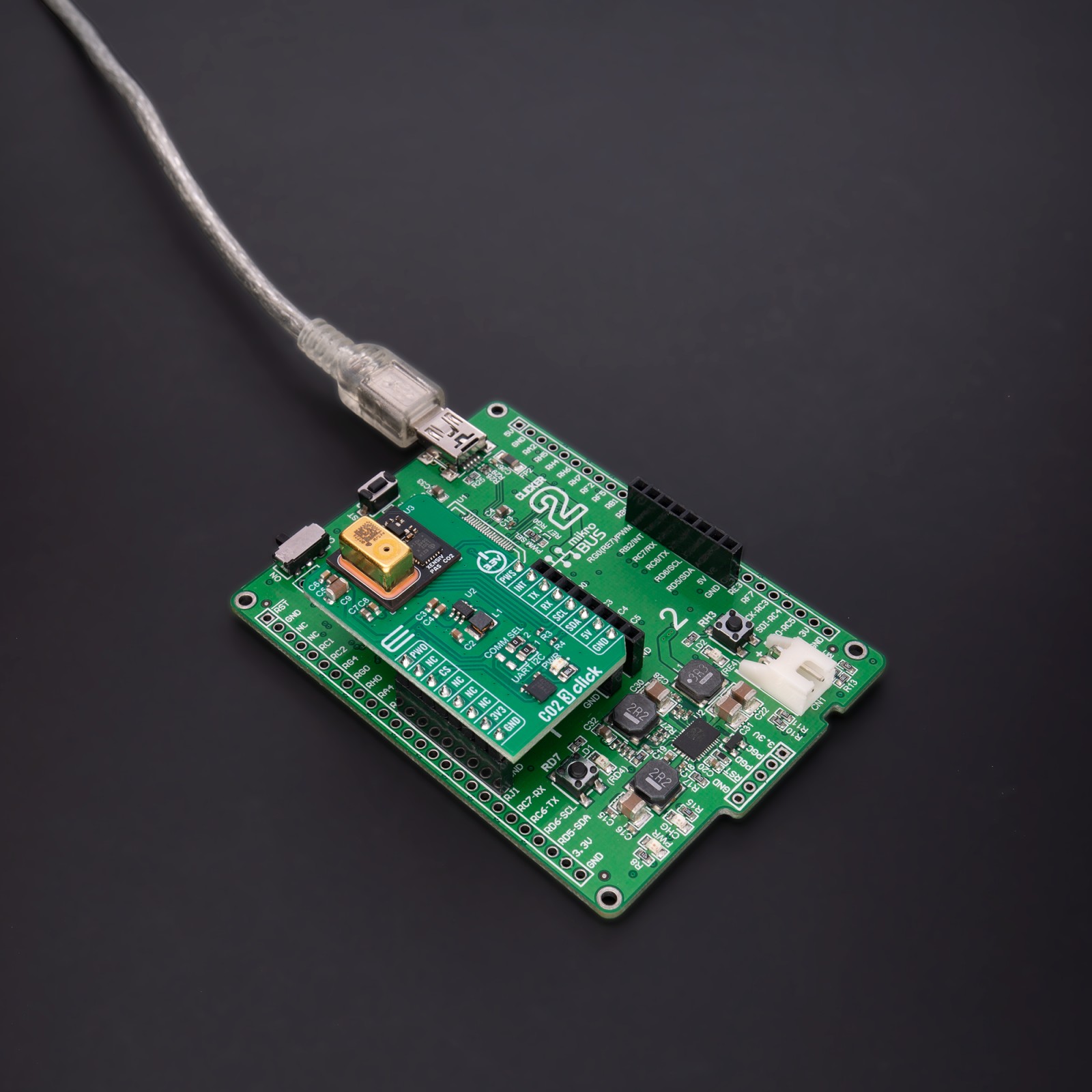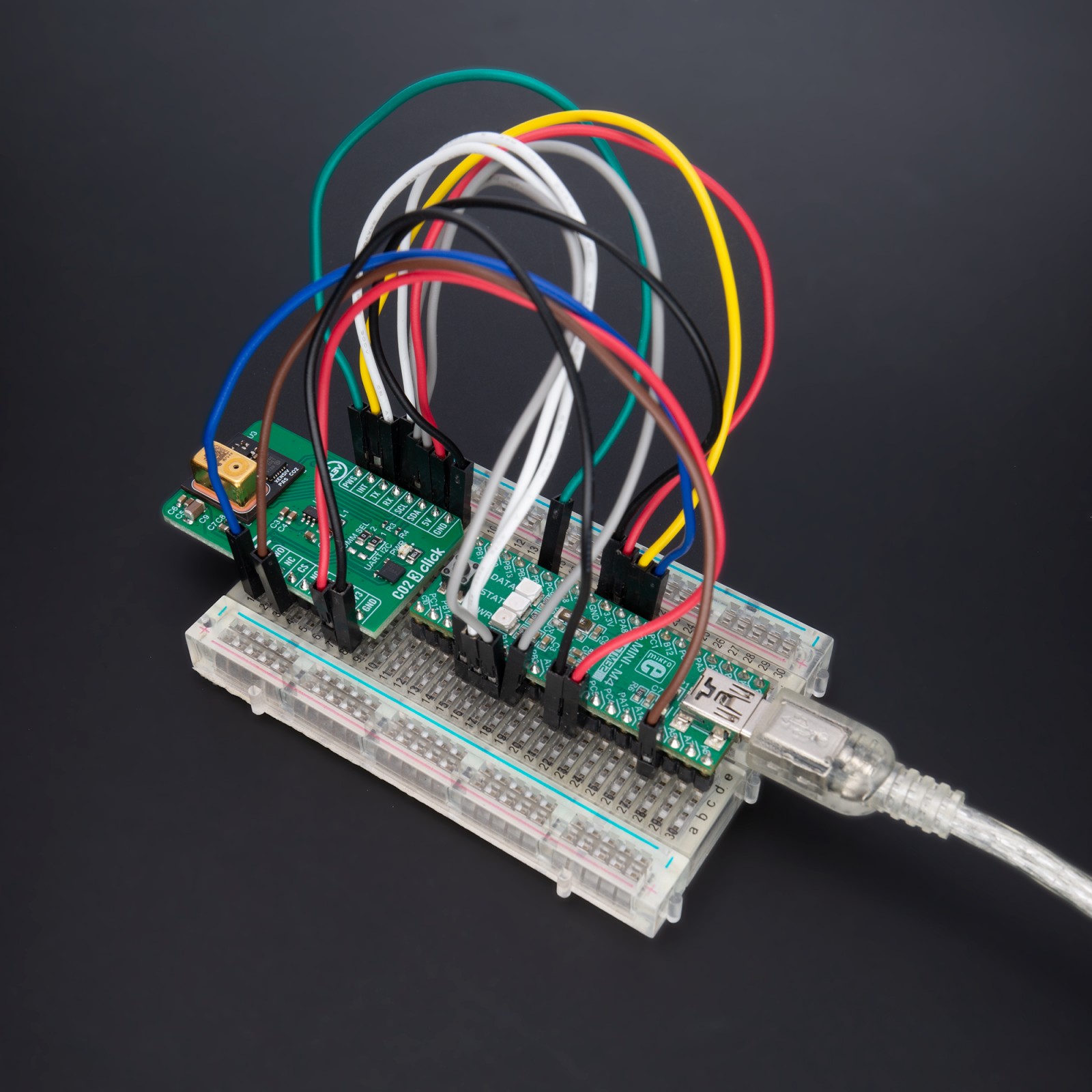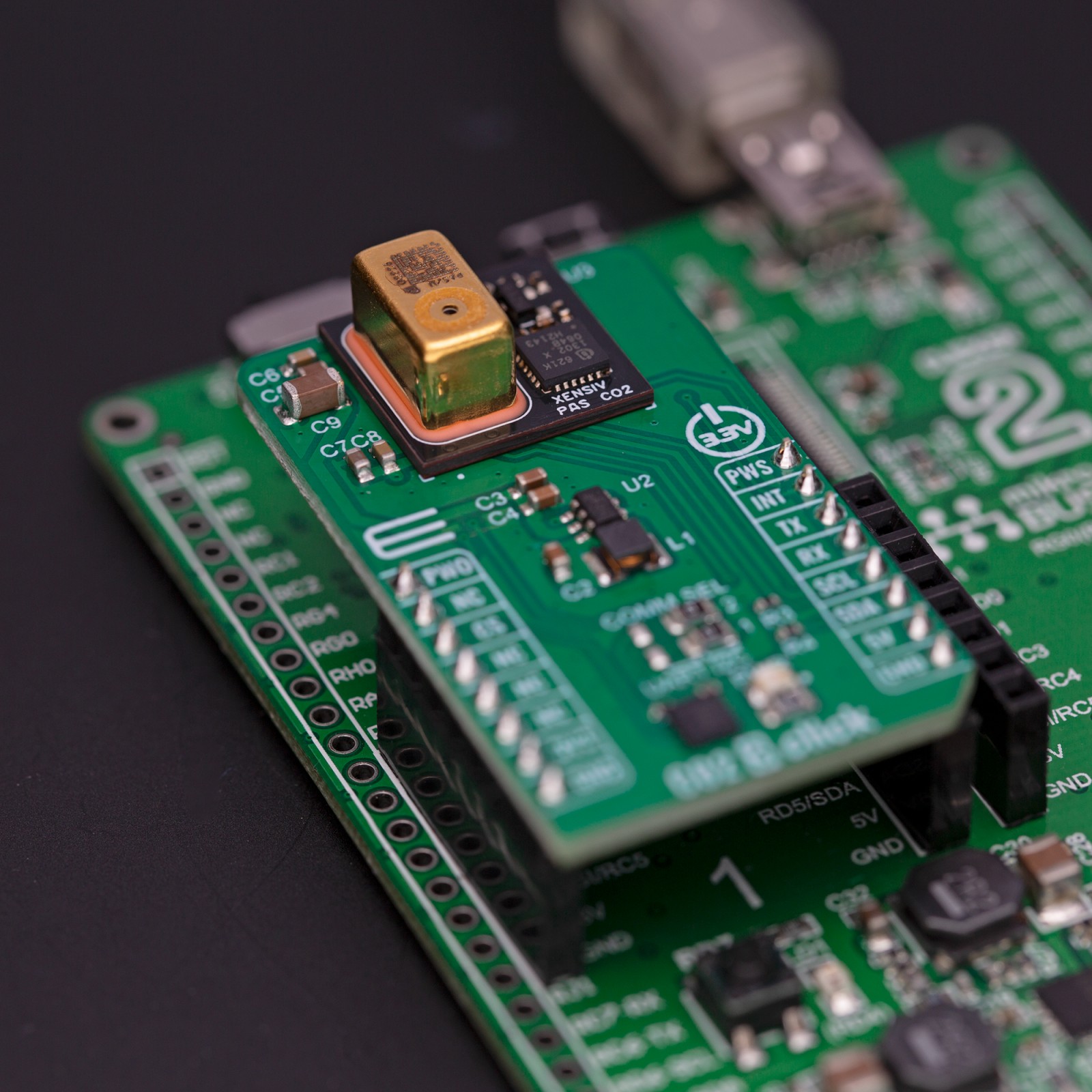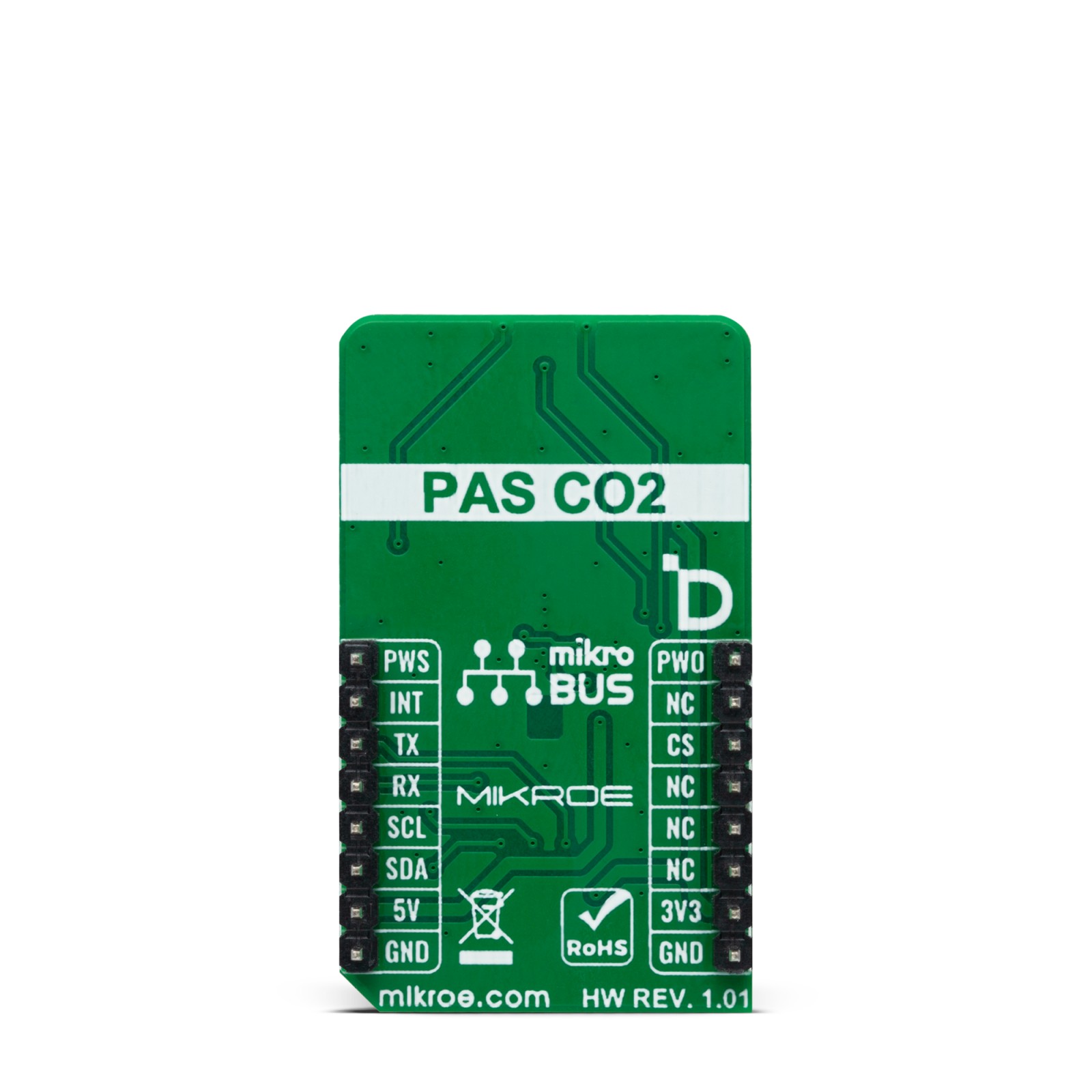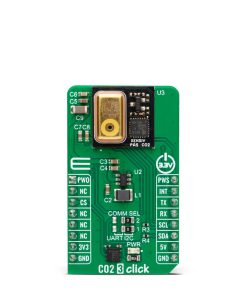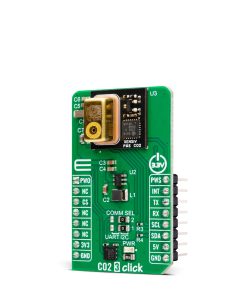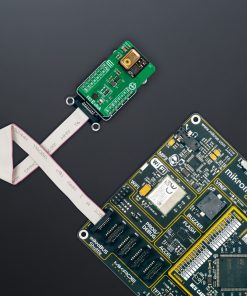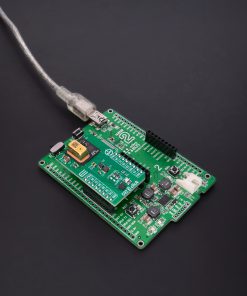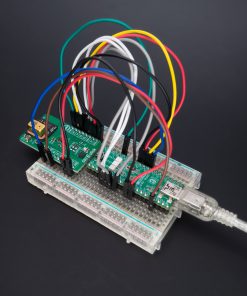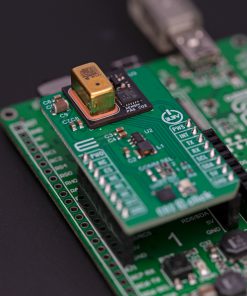CO2 3 Click
R2,250.00 ex. VAT
CO2 3 Click is a compact add-on board that allows for precise and reliable indoor air quality measurements. This board features XENSIV™ PASCO2V01BUMA1, a highly accurate CO2 sensor module from Infineon Technologies that uses photoacoustic spectroscopy technology to measure indoor air quality. The module comprises a gas measuring cell, an IR emitter, a microphone, and a microcontroller for data processing. Its key components are developed in-house, ensuring the highest quality and performance. Other major characteristics include high accuracy, low power consumption, and versatile configuration options. This Click board™ is suitable for various applications in building automation, smart home appliances, and air quality monitoring, such as air purifiers, thermostats, and HVAC (heating, ventilation, and air conditioning) systems.
CO2 3 Click is fully compatible with the mikroBUS™ socket and can be used on any host system supporting the mikroBUS™ standard. It comes with the mikroSDK open-source libraries, offering unparalleled flexibility for evaluation and customization. What sets this Click board™ apart is the groundbreaking ClickID feature, enabling your host system to seamlessly and automatically detect and identify this add-on board.
NOTE: In addition to the 12V version, CO2 3 Click is also available in a 5V variant. If you require the 5V version or need more information, please reach out to us through the MIKROE Contact Us page.
Stock: Lead-time applicable.
| 5+ | R2,137.50 |
| 10+ | R2,025.00 |
| 15+ | R1,912.50 |
| 20+ | R1,840.50 |

